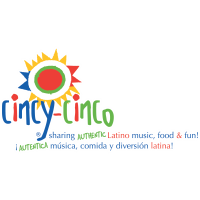Fiesta Del Pueblo History
May 01, 2007

“Fiesta del pueblo” or town party has a very long history in the Latino world. Its origin is not quite clear, but it appears to have evolved in Spain, probably in the 11th or 12th century. In some towns it was used to celebrate the work of the key craftsmen of the town; in more rural areas it may have been to celebrate the harvest, much as other cultures celebrate the harvest.
It was brought to America by the Spanish, undoubtedly Catholic missionaries, as another aspect of their quest to convert Latin American natives to Christianity. Today it is built around a yearly devotion or re-dedication to the patron saint or virgin of the town or main church in town. The “fiesta” generally begins with a religious ceremony, after which the party begins. It can last from a week to ten days. This happens throughout Latin America. In Mexico alone, there are 5-6,000 “fiestas” each year.
Most “fiestas de pueblo” include a lot of traditional as well as modern dance and music. Food in the form of local tasty treats also plays an important part. For the children, there are games and carnival rides. And for all lots of kiosks selling all kinds of wares.
Each town celebration usually has some unique elements that may include any of the following elements:
It was brought to America by the Spanish, undoubtedly Catholic missionaries, as another aspect of their quest to convert Latin American natives to Christianity. Today it is built around a yearly devotion or re-dedication to the patron saint or virgin of the town or main church in town. The “fiesta” generally begins with a religious ceremony, after which the party begins. It can last from a week to ten days. This happens throughout Latin America. In Mexico alone, there are 5-6,000 “fiestas” each year.
Most “fiestas de pueblo” include a lot of traditional as well as modern dance and music. Food in the form of local tasty treats also plays an important part. For the children, there are games and carnival rides. And for all lots of kiosks selling all kinds of wares.
Each town celebration usually has some unique elements that may include any of the following elements:
- “Desfile” (parade) with offerings to the saint or leading to the crowning of the king and queen of the festival. Some even include characters and rituals carried over from the Indians’ pagan days.
- “Hogueras” (bonfires) for grilling in the street
- “Fallas” with the burning of cardboard figures
- “Comparsa de gigantes”(procession of giants)
- “Encierro de Toros” (corralling of the bulls) best known worldwide at the San Fermin Festival in Pamplona, leading to bullfights in the town bullring